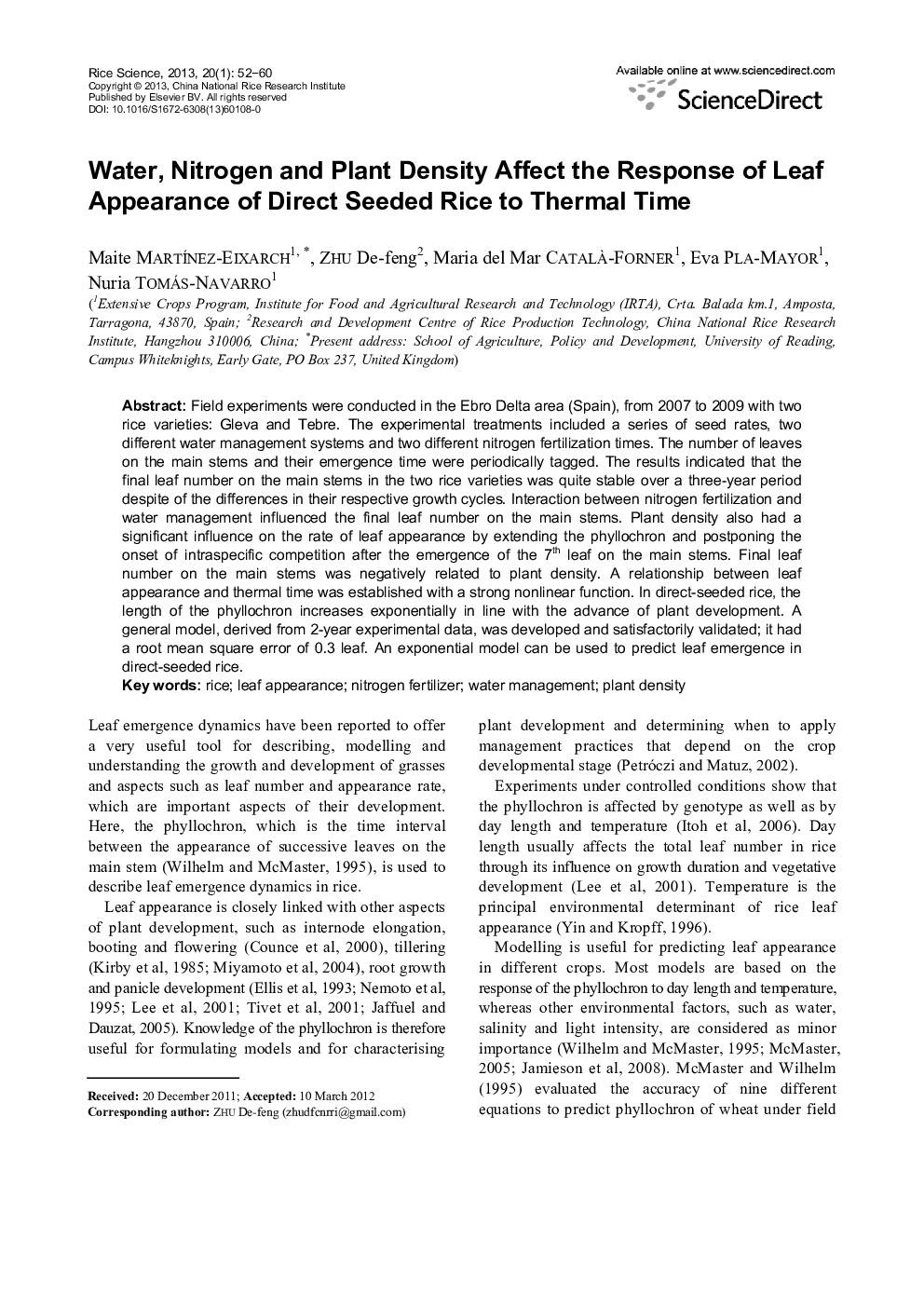| Article ID | Journal | Published Year | Pages | File Type |
|---|---|---|---|---|
| 4501981 | Rice Science | 2013 | 9 Pages |
Field experiments were conducted in the Ebro Delta area (Spain), from 2007 to 2009 with two rice varieties: Gleva and Tebre. The experimental treatments included a series of seed rates, two different water management systems and two different nitrogen fertilization times. The number of leaves on the main stems and their emergence time were periodically tagged. The results indicated that the final leaf number on the main stems in the two rice varieties was quite stable over a three-year period despite of the differences in their respective growth cycles. Interaction between nitrogen fertilization and water management influenced the final leaf number on the main stems. Plant density also had a significant influence on the rate of leaf appearance by extending the phyllochron and postponing the onset of intraspecific competition after the emergence of the 7th leaf on the main stems. Final leaf number on the main stems was negatively related to plant density. A relationship between leaf appearance and thermal time was established with a strong nonlinear function. In direct-seeded rice, the length of the phyllochron increases exponentially in line with the advance of plant development. A general model, derived from 2-year experimental data, was developed and satisfactorily validated; it had a root mean square error of 0.3 leaf. An exponential model can be used to predict leaf emergence in direct-seeded rice.
